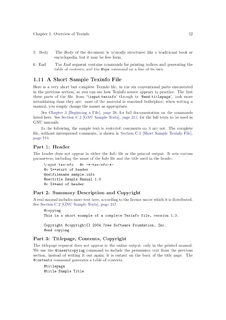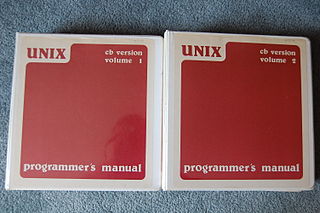
Configuration management (CM) is a systems engineering process for establishing and maintaining consistency of a product's performance, functional, and physical attributes with its requirements, design, and operational information throughout its life.
The CM process is widely used by military engineering organizations to manage changes throughout the system lifecycle of complex systems, such as weapon systems, military vehicles, and information systems. Outside the military, the CM process is also used with IT service management as defined by ITIL, and with other domain models in the civil engineering and other industrial engineering segments such as roads, bridges, canals, dams, and buildings.
Software architecture refers to the high level structures of a software system and the discipline of creating such structures and systems. Each structure comprises software elements, relations among them, and properties of both elements and relations. The architecture of a software system is a metaphor, analogous to the architecture of a building. It functions as a blueprint for the system and the developing project, laying out the tasks necessary to be executed by the design teams.
A document management system (DMS) is a system used to track, manage and store documents and reduce paper. Most are capable of keeping a record of the various versions created and modified by different users. The term has some overlap with the concepts of content management systems. It is often viewed as a component of enterprise content management (ECM) systems and related to digital asset management, document imaging, workflow systems and records management systems.

Texinfo is a typesetting syntax used for generating documentation in both on-line and printed form with a single source file. It is implemented by a computer program released as free software of the same name, created and made available by the GNU Project from the Free Software Foundation.
Doxygen is a documentation generator, a tool for writing software reference documentation. The documentation is written within code, and is thus relatively easy to keep up to date. Doxygen can cross reference documentation and code, so that the reader of a document can easily refer to the actual code.
The Debian Free Software Guidelines (DFSG) is a set of guidelines that the Debian Project uses to determine whether a software license is a free software license, which in turn is used to determine whether a piece of software can be included in Debian. The DFSG is part of the Debian Social Contract.
Release notes are documents that are distributed with software products, sometimes when the product is still in the development or test state. For products that have already been in use by clients, the release note is delivered to the customer when an update is released.
A or also commonly known as is a technical communication document intended to give assistance to people using a particular system. It is usually written by a technical writer, although user guides are written by programmers, product or project managers, or other technical staff, particularly in smaller companies.
Software test documentation is the vital element that raises any experimental activities to the level of a software test. International organisations like IEEE and ISO have published standards for software test documentation.
A documentation generator is a programming tool that generates software documentation intended for programmers or end users, or both, from a set of source code files, and in some cases, binary files. Some generators, such as Doxygen or Javadoc, use special comments to drive the generation.
A cadastre is a comprehensive land recording of the real estate or real property's metes-and-bounds of a country.
In computer programming, self-documenting source code and user interfaces follow naming conventions and structured programming conventions that enable use of the system without prior specific knowledge. In web development, self-documenting refers to a website that exposes the entire process of its creation through public documentation, and whose public documentation is part of the development process.
AsciiDoc is a human-readable document format, semantically equivalent to DocBook XML, but using plain-text mark-up conventions. AsciiDoc documents can be created using any text editor and read “as-is”, or rendered to HTML or any other format supported by a DocBook tool-chain, i.e. PDF, TeX, Unix manpages, e-books, slide presentations, etc.
A specification often refers to a set of documented requirements to be satisfied by a material, design, product, or service. A specification is often a type of technical standard.

The GNU Free Documentation License is a copyleft license for free documentation, designed by the Free Software Foundation (FSF) for the GNU Project. It is similar to the GNU General Public License, giving readers the rights to copy, redistribute, and modify a work and requires all copies and derivatives to be available under the same license. Copies may also be sold commercially, but, if produced in larger quantities, the original document or source code must be made available to the work's recipient.
Sphinx is a documentation generator written and used by the Python community. It is written in Python, and also used in other environments.
In computer programming, an application programming interface (API) is a set of subroutine definitions, communication protocols, and tools for building software. In general terms, it is a set of clearly defined methods of communication among various components. A good API makes it easier to develop a computer program by providing all the building blocks, which are then put together by the programmer.




